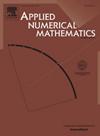Fractal properties of 4-point interpolatory subdivision schemes and wavelet scattering transform for signal classification
IF 2.2
2区 数学
Q1 MATHEMATICS, APPLIED
引用次数: 0
Abstract
Wavelet scattering is a recent time-frequency transform that shares the convolutional architecture with convolutional neural networks, but it allows for a faster training and it often requires smaller training sets. It consists of a multistage non-linear transform that allows us to compute the deep spectrum of a signal by cascading convolution, non-linear operator and pooling at each stage, resulting a powerful tool for signal classification when embedded in machine learning architectures. One of the most delicate parameters in convolutional architectures is the temporal sampling that strongly affects the computational load as well as the classification rate. In this paper the role of sampling in the wavelet scattering transform is studied for signal classification purposes. In particular, the role of subdivision schemes in properly compensating the information lost when using sampling at each stage of the transform is investigated. Preliminary experimental results show that, starting from coarse grids, interpolatory subdivision schemes reproduce copies of the original scattering coefficients at a fixed full grid that still represent distinctive features for signal classes. In fact, thanks to the ability of the scheme in reproducing similar fractal properties of the transform through an efficient iterative refinement procedure, the reproduced coefficients enable to obtain classification rates similar to those provided by the native wavelet scattering transform. The relationships between the tension parameter of the scheme and the fractal dimension of its limit curve are also investigated.
求助全文
约1分钟内获得全文
求助全文
来源期刊

Applied Numerical Mathematics
数学-应用数学
CiteScore
5.60
自引率
7.10%
发文量
225
审稿时长
7.2 months
期刊介绍:
The purpose of the journal is to provide a forum for the publication of high quality research and tutorial papers in computational mathematics. In addition to the traditional issues and problems in numerical analysis, the journal also publishes papers describing relevant applications in such fields as physics, fluid dynamics, engineering and other branches of applied science with a computational mathematics component. The journal strives to be flexible in the type of papers it publishes and their format. Equally desirable are:
(i) Full papers, which should be complete and relatively self-contained original contributions with an introduction that can be understood by the broad computational mathematics community. Both rigorous and heuristic styles are acceptable. Of particular interest are papers about new areas of research, in which other than strictly mathematical arguments may be important in establishing a basis for further developments.
(ii) Tutorial review papers, covering some of the important issues in Numerical Mathematics, Scientific Computing and their Applications. The journal will occasionally publish contributions which are larger than the usual format for regular papers.
(iii) Short notes, which present specific new results and techniques in a brief communication.
 求助内容:
求助内容: 应助结果提醒方式:
应助结果提醒方式:


